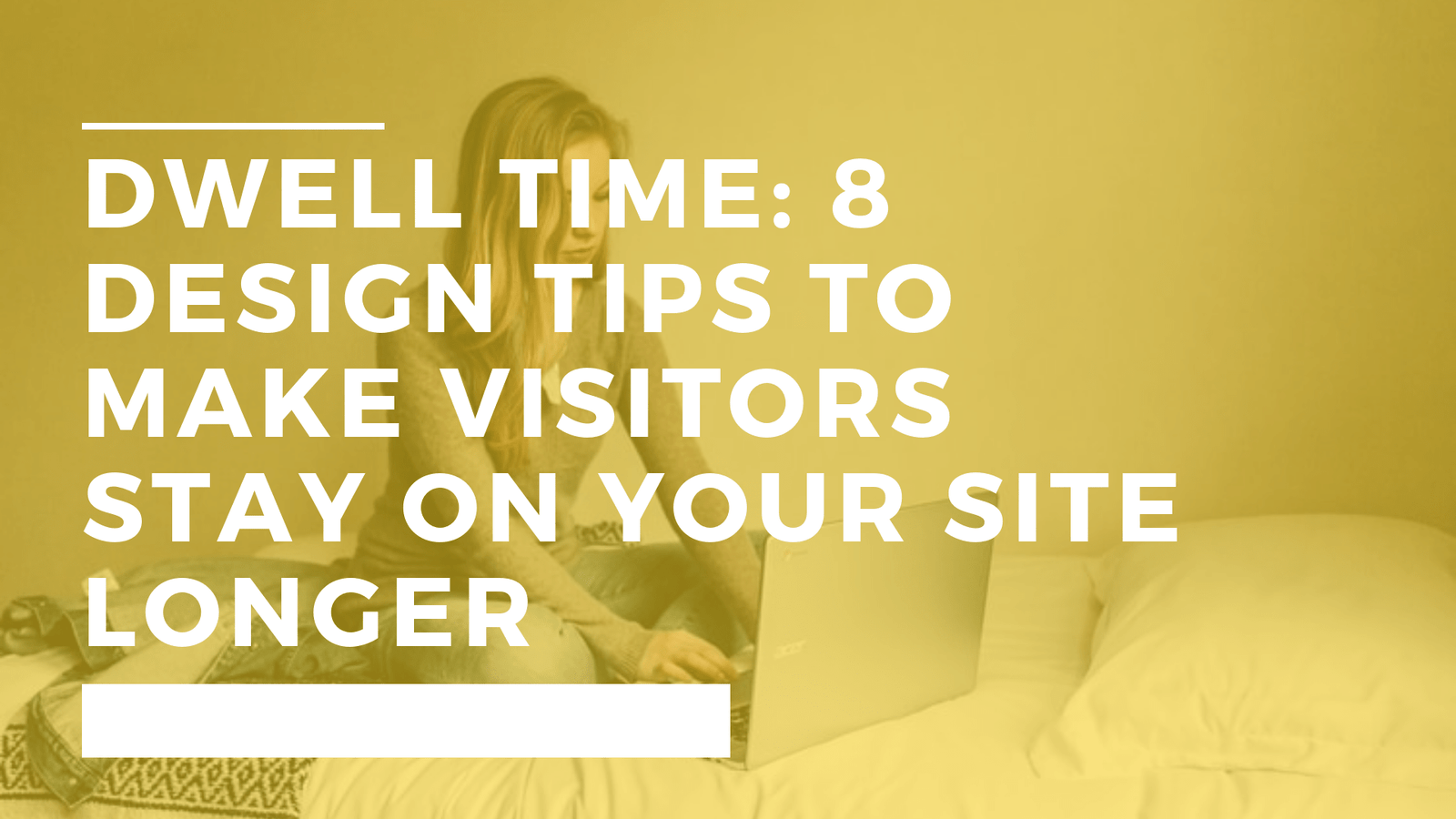Dwell time, also known as the length of time that an average user spends on your site before coming back again on the search results, is an important metric for user experience.
That’s because it gives you an idea of whether or not users find your content useful and if it meets their needs. This is something you need to keep in mind, especially if you intend to monetize your blog or website.
In a study, the average dwell time of websites that rank in the top 10 of the search results can be as high as 3 minutes and 10 seconds.
But here’s the big question: How do you manage to retain your visitors once they step onto your site?
In this post, we will talk about the eight design tips that will make site visitors stay longer on your site.
1. Keep your design simple

To boost your site’s dwell time, you have to keep your site simple yet informative. As much as you can, make your content relatable with your audience and maintain a friendly tone.
Stay away from using over-complicated words that will force a user to open a dictionary just to understand what you are saying. The reality is, if people do not understand the language you are using, they will leave your site altogether.
So, the key here is using short and simple sentences. Also, unless your site is dedicated to creating long-form content, chances are, your audience does not want to spend a lot of time reading.
As much as you can, keep your blog posts, About Me, and other descriptive texts on your site simple and on-point.
2. Use simple navigation

How your site’s navigation is structured will significantly affect how long a web visitor will stay.
Placing a link to every single page in the sidebar or header will not be an effective strategy. As your site grows, you will have hundreds of unsorted link on the menu. Over time, it will be challenging for visitors to look for content on particular topics.
As an alternative, you can utilize a breadcrumb-style navigation structure that organizes your category pages hierarchically. Then, you can place the top-level category links on your site’s header menu or sidebar. Users can click this menu to search for links to other pages on your site with related content.
3. Make your site visually appealing

Whether you like it or not, people will always judge a book by its cover. So if your site design does not quite look right, they will not stay that long.
At the end of the day, it is about how confident they are with your site, as well as having a low-quality design will make them think that your content is low-quality, too.
According to Sytian Productions Web Designer Philippines, “Start by using an excellent design template, as well as pick the right images and color choices that add up to a beautiful design. Take as much time that you need to get it right. In the end, your efforts will pay off, when it comes to your site’s dwell time.”
4. Embed videos on your content

Humans are highly visual creatures. Most users would rather watch a video than read a long article. So are you giving your site visitors that option?
Embedding videos on your content might seem like a lot of work, but it is not as daunting as it seems. To craft videos, all you need to do is to repurpose some of your content that is text-based into presentation videos.
Hosting them on your own or embedding your videos from YouTube, entices visitors to stay longer on your site.
While users can scan texts and images, they need to press the click button for them to watch a video and then wait for it to finish.
5. Add high-quality images
Images are more than just to improve the overall aesthetics of your site. Its primary function is to help convey the message of the adjacent text on your site, enticing users to stay longer.
Visitors might browse through your site’s content, but they will stop to look at the images. Even if it only disrupts them from reading your content for a split second, it slows down the user’s speed of reading your content, and as a result, a longer session duration.
6. Make your site mobile-friendly

Mobile traffic now accounts for more than half of the worldwide Internet traffic. So if your website is not optimized for mobile-viewing, mobile users might come across problems like font sizes that are difficult to read, too close touchpoints, and horizontal scrolling, which will make them leave your site for a split second.
That’s why to keep your site traffic, you need to optimize it for mobile viewing, by utilizing a highly responsive template or theme to adjust automatically, and to fit on the device that it is being viewed.
7. Practice internal linking
Another strategy to keep your site visitors for extended periods is to guide them into other relevant site pages. The more pages a visitor can access on your site, the more likely that they will stay.
Users can utilize the primary navigation menu to access other pages on your site, but they can also utilize contextual internal links to help them navigate around your site.
These contextual internal links are phrases or words that are found on your content, linking to other relevant pages on your website. When a user comes across a linked phrase or word on your content, they can click on it to learn more about the linked topic.
8. Optimize your loading speed

Users these days simply do not have the patience to wait for a slow-loading site. If a site takes more than 2 seconds to load, they will eventually leave.
The web hosting provider that you choose will have a significant impact on your site speed and consistency in the long run. There are ways to improve your site speed, such as optimizing your database, compressing your images, using a high-quality caching plug-in, as well as a lightweight theme on your website.
Over to You
Generating traffic to your site is only advantageous for if they stay for extended periods. If you cannot prevent web users from leaving, then make them stay on your site longer by applying these tips.








